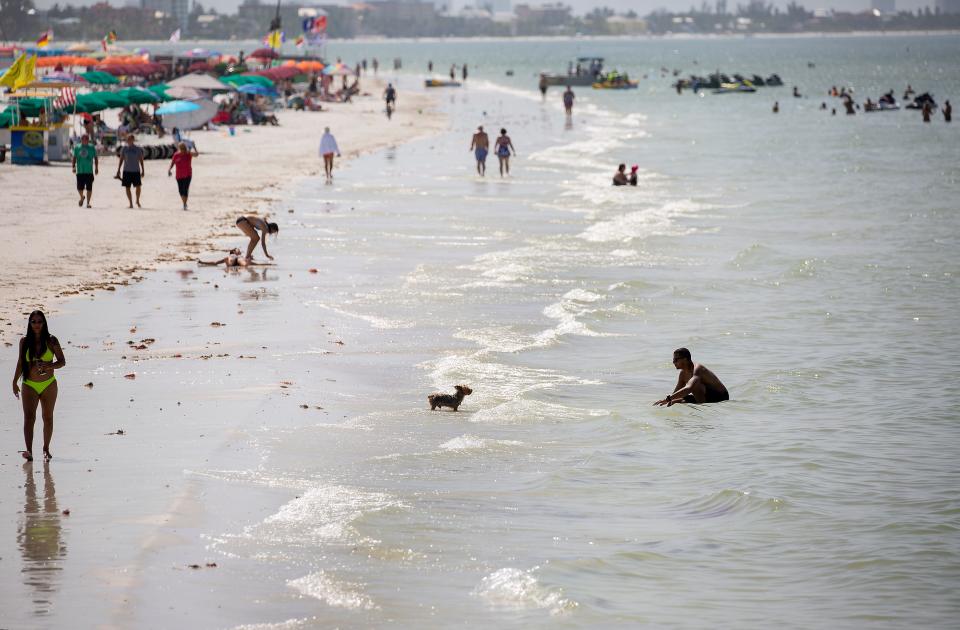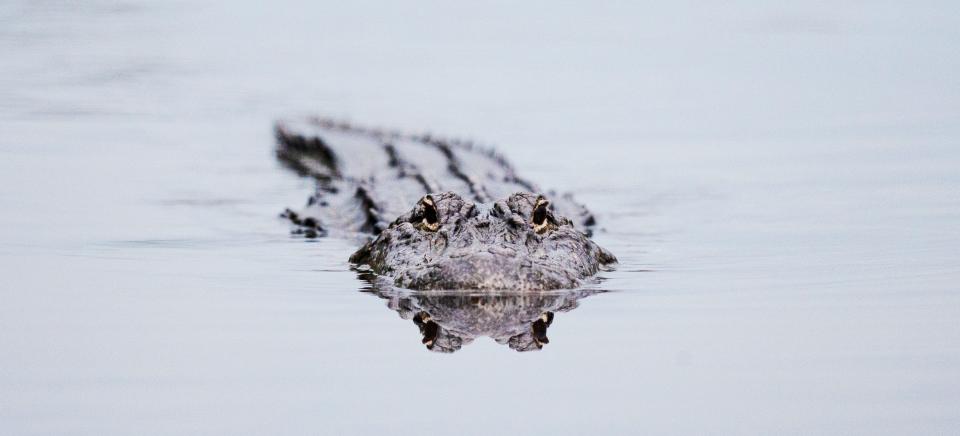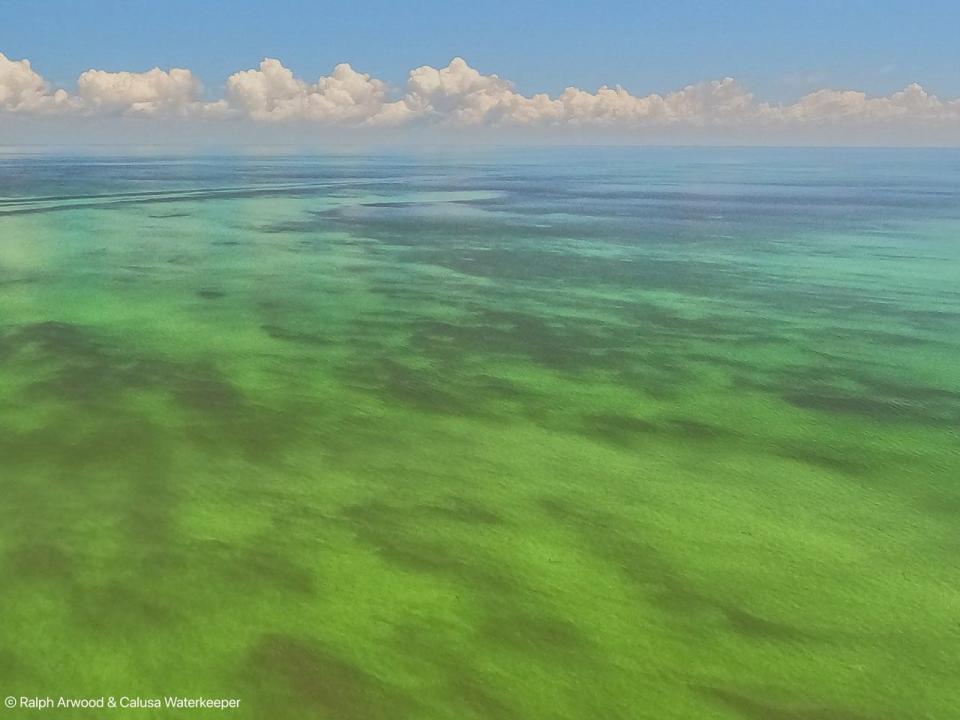Alarmingly high water temperatures capture attention of FGCU's expert researchers
They say records are made to be broken. When it comes to the temperature in Southwest Florida, it feels as if there is a near-record or record just about every day now. And the extreme heat isn't limited to the air. The water also is hot.
This condition is referred to as a "marine heat wave". Water temperatures are a driving factor in the abnormally high land temperatures, including heat indexes well over 100 degrees, which has caused a regular run of heat advisories for Southwest Florida this summer.
"Exceptionally high sea surface temperatures are contributing, especially around Southwest Florida and the Keys where SST (Sea Surface Temperatures) are about 95-97 F," said Dr. Emily Powell, assistant state climatologist at the Florida Climate Center in Tallahassee.
Here is some heat perspective: Weather history: These are Florida's 10 hottest days ever
To help us to better understand the impact these excessive water temperatures are having on the environment in and around Southwest Florida waters, The News-Press and Naples Daily News asked two local experts a series of questions. Mike Parsons is the director of Vester Marine & Environmental Science Researcher Field Station at FGCU's Water School, and Melissa May is an assistant professor of marine biology at the Water School.
Here is what they told us:

What do we know about the historic water temperatures in Florida right now and the impact on Southwest Florida?
PARSONS: Sea surface temperatures are increasing in the eastern Gulf of Mexico at about 0.2 degrees Celsius per decade. Slow but steady. Winter temperatures are milder, allowing tropical species to survive winter months and become more established in the Gulf.
Are there any mechanisms or measuring devices being used to help with the research and data pertaining to water temperature?
MAY: Yes, Florida Gulf Coast University (and other agencies, like DEP, SCCF, EBAP, FWC) have data loggers around the Gulf and in our estuaries that are measuring water temperatures. My lab has five currently deployed at oyster reefs around Estero Bay that are taking measurements continuously. We also have researchers, like the Bonita Water Steward, that samples twice per week all over the bay. She uses a different kind of sensor that acts more like a thermometer that can do profiles of the water. CHNEP Water Atlas (https://chnep.wateratlas.usf.edu/) has historical data, but it only goes back so far. So we can look at what is normal “high” temps for this time of year for comparison.
Is any research underway tied to these historically high temperatures? Or, will there be research conducted?
MAY: The research in my lab is focused on studying natural stress on the oyster reefs, which include things like temperature and salinity. Since the oysters cannot move and are exposed to the air at low tide, both water and air temperatures can have a negative impact on their health. Often times, when water temperatures increase above normal for too long, it can cause a lot of stress. Most animals that live in the ocean cannot regulate their body temperature, so when it is hot, they also get hot. This impacts their metabolism, which speeds up. So they get stressed out because they are spending a lot of energy and using up a lot of oxygen. If the stress is too severe (like above 100 deg F) and lasts for multiple days, then we may start to see mortality.
We’ve been slowly working on this for the past year, but will be sampling later this week to see if these temperatures are causing any more stress than normal, from an oyster perspective.
What will scientists be watching or wanting to learn about these historic temperatures and the impact on our ecosystems?
MAY: Kind of already answered this above, but just looking to see whether things start to die off, whether we see species moving away from our area into cooler water, etc.

Is there any particular wildlife that is jeopardy from these high water temperatures? Birds? Fish? Alligators?
MAY: High temperatures can be problematic for many species. All invertebrates and fish are ectothermic and cannot regulate their body temperature, so especially for the ones that cannot move, this can be problematic. Stone crabs don’t really like warmer water, so larval stages can be impacted; corals get stressed by hot temperatures.
Other species like alligators and turtles, the sex of embryos is determined by temperature, so a lot of hot days during incubation, could result in more males than females.
And even mammals can get stressed. Usually manatees get too cold, but if temperatures get too warm and they have lots of blubber and no way of cooling down, they actually could be at risk of hyperthermia (just like humans).
What is causing these abnormally high water temperatures?
MAY: The water temperature is driven by the air temperature. It has been warm for July; average high temperatures for this time of year in SWFL are in the low 90s, but this heat wave is causing warmer than usual water temperatures. Climate change is causing increases in temperature worldwide.

What do abnormally high water temperatures mean for red tide and toxic blue green algae? Good or bad?
PARSONS: Hard to say for red tide. It typically blooms in winter (October – February) so warmer winter will not hinder (and may help grow faster). Optimal temperatures for red tide growth are 22 – 28 C, so summers could get too hot if temperatures are greater than 28 C.
Being bacteria (cyanobacteria), blue green algae will grow faster in warmer temperatures. If nutrients are plentiful and water conditions are optimal (stagnant and/or calm waters), blooms can be expected. Not always Microcystis, but some cyanobacteria is likely to bloom in freshwater systems when it is hot.
What do the high water and air temperatures mean for coral reefs surrounding Florida?
MAY: Corals are sensitive to high temperature and may bleach if the temperatures become stressful, when the algae that lives in their tissues are expelled. Many of the areas around the keys are on bleaching alert because of the temperatures. They can recover if the stress goes away, but will die if it last too long.
This article originally appeared on Fort Myers News-Press: Record global ocean heating has invaded Florida in 2023

